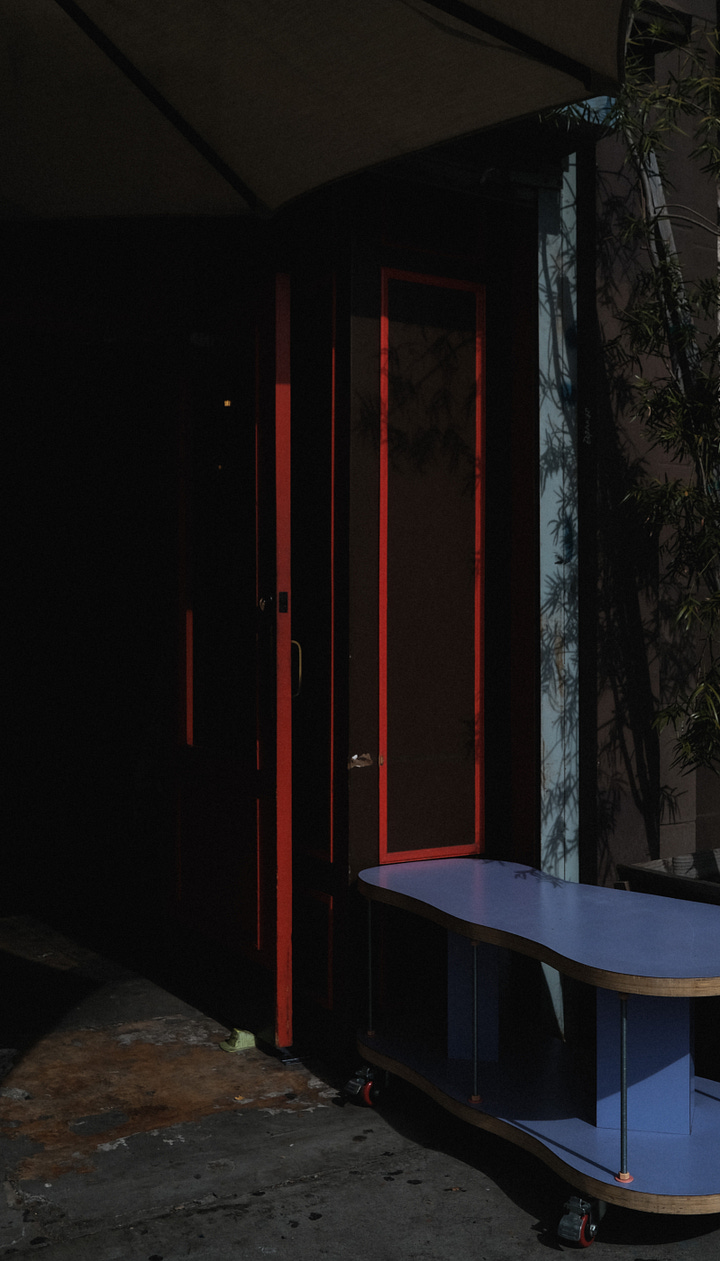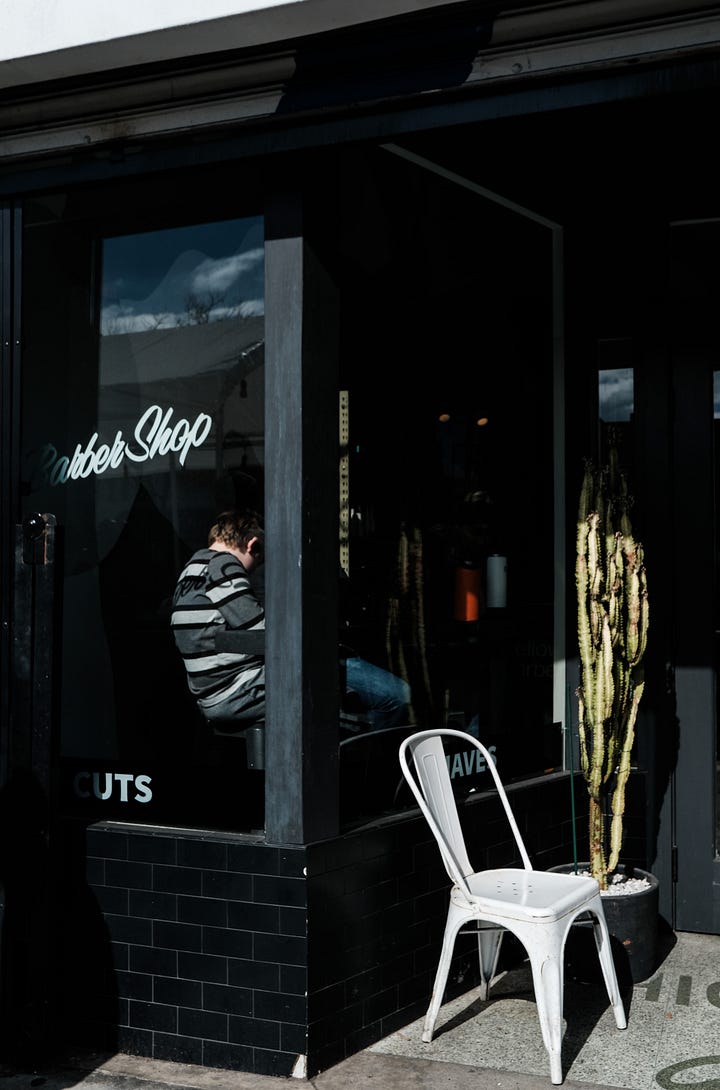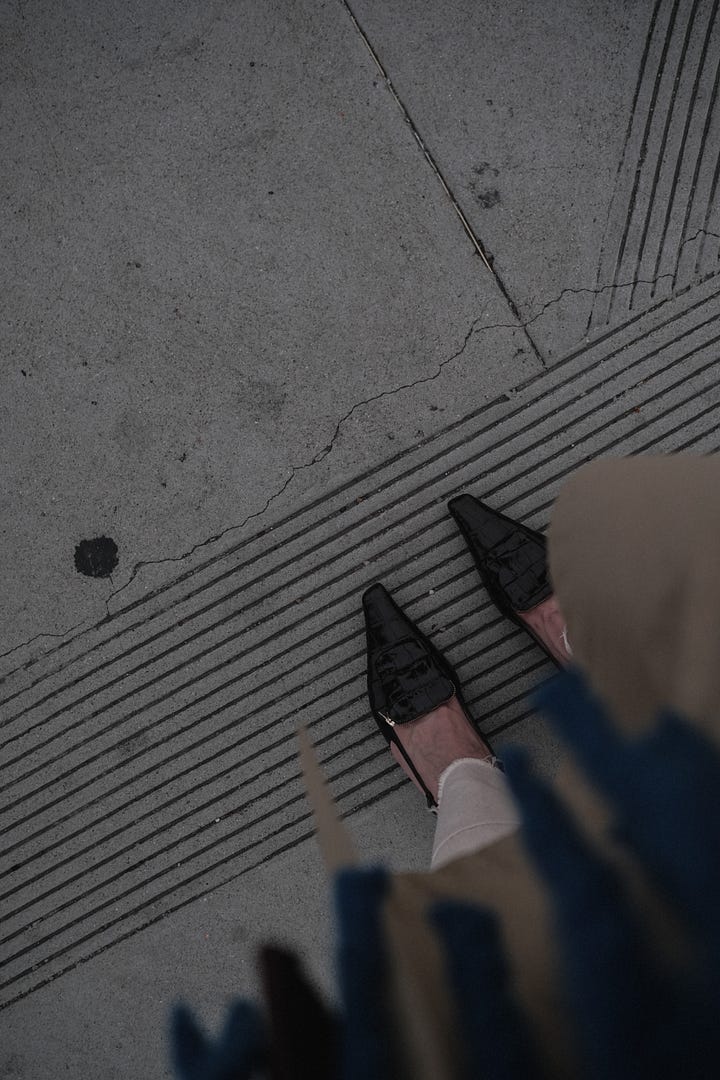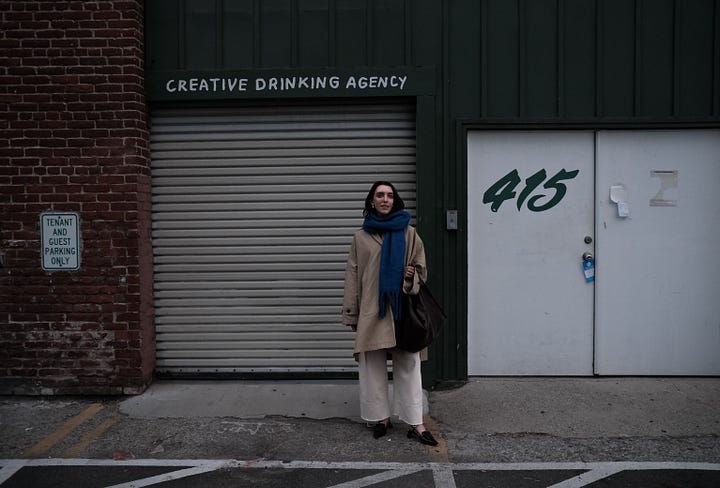Down the street from me in Oakland, there was a restaurant whose walls were made out of old brick, and in the crevices formed by the cracking grout people would leave curled-up slips of paper–often receipts, sometimes napkins or notebook paper–for others to find. I’m not sure when this tradition started. When I was a teen, the space was occupied by a different restaurant, and I remember wishing for a table next to a wall so I could pluck out and read the notes or look at the drawings people left behind. When it changed ownership, the slips continued. Now, it’s closed again, waiting for a new occupant, and when I walk past, I think about the notes left within the walls. I hope that when its doors open again, they’ll still be there for us to read and to add to.
This past weekend I was in Los Angeles, a city I simultaneously love and find overwhelming (this is not a unique feeling). As someone used to getting around on foot or on a bike, I don’t like cars and I loathe traffic. Google Maps reporting an estimate of 45 minutes to move three miles across town wrecks me. But I was there this time with my husband, and we decided to do things differently: except for a few trips, we relied on the Metro (big fan) and our feet. On Saturday, we walked around fifteen miles, wandering through the neighborhoods between Chinatown and Los Feliz. Often, what I find overwhelming in Los Angeles is the desire to do certain things; to hit the spots I have saved in advance in my map; to bend the space-time continuum to make it all possible. This day, we had no agenda except to walk, and to eat when we were hungry, and stopped whenever we passed something we wanted to explore.
On the way, we went up and down a couple sets of secret stairs around Silver Lake. I say secret, but of course they aren’t; we passed someone carrying groceries up one flight; someone running up another. They’re public spaces. For many people, they’re part of a daily routine. But because I didn’t expect to encounter them on our walk, they felt like a treat. Enormous agaves framed the railings, and we could see all the way across to the opposite hill, the pink and yellow houses fading into a row of palm trees against the sky.


Maybe hidden is a better word: no one’s keeping them from you, but you have to look to really experience them. I feel about hidden places in cities the same way I do about the notes tucked into the walls at the restaurant, or about finding a thoughtful inscription in a used book, or pulling out, from the pockets of an old leather bomber jacket I “borrowed” from my mom, tickets to a re-screening of A Man and a Woman from 1988, before I was born.
When I wander around a city, I am not looking for anything momentous. I like finding color patterns in the arrangement of street furniture; I like noticing the quality of the light. But especially, I like things that make me think of the people behind them. I like to see messages carved into sidewalks and wonder who put them there; when I walk on hidden staircases, I think about the homes they pass by and the people who walk on them every day. I like weird shop signs and old fonts because you can see the work of people in them. I like knowing that everything I pass is the end or the beginning of a story.


There is a lot of discourse right now about taste—how difficult it is to find yours, how slippery it is to carve out your niche against an algorithmic midfield, how the aesthetic of mass appeal is wearing on us. I have felt my mind running along a similar track: what do I actually like? Does how I present myself—how I dress—actually convey anything of that, or is it just a shadow of a suggestion? Walking around LA this weekend made me think about how I am so often drawn to the small moments in larger landscapes. The hidden stories and details. (As a tangent, I am also drawn to writing that does this, most recently Claire Keegan—if you haven’t read her, I highly recommend and would love your thoughts!). Clothing can carry this—sometimes. It is too much to ask that every piece that we choose be meaningful; a foundation of things that work simply because they do is important. But I notice I’m happiest when I have something on that is personal to me. Either I picked it up while traveling, or it was a gift, or I found it locally, or I pulled it out of my parents closet (and in fact, I wrote a whole essay about that quite some time ago). There are many different ways clothes can hold meaning. They don’t always have to be visible. But maybe, when you next see someone whose style you admire, instead of asking: what/who is that? Try: what’s the story behind that? You might be surprised.


P.S. It occurred to me also this weekend, while breaking in these Tibi shoes, which I have longed for for months, that the reason I was drawn to them is that they make this memory-capsule element of clothing visible. These little pockets on the vamp actually unzip and are begging to be filled with those small things—transit passes, coins, ticket stubs—that you might find years from now and be transported. Usually it’s jackets or the occasional trouser that are tasked with storing the ephemera of our lives; I love that shoes can now play a small role.




you have the most wonderful thought process :) loved this piece
I love it when clothing takes on memory. Some of my favourite clothes are favourites, not only because of how they look and feel, but because of the reminders and associations I've tied to them in my mind. Great article! 🖤